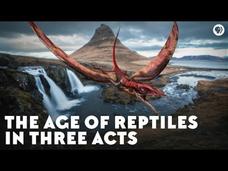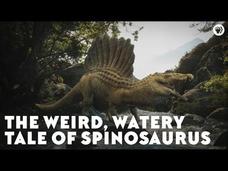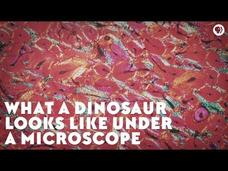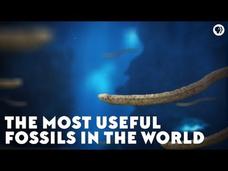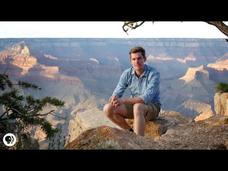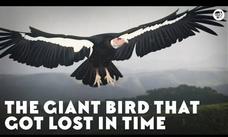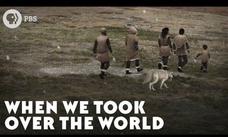PBS
Black Hole Apocalypse | Modeling Galaxies
Once, scientists believed black holes to be rare, but modern technology is proving otherwise. Using data from the Hubble telescope, scientists create computer models of distant galaxies. They discover super massive black holes in the...
PBS
Black Hole Apocalypse | How to Detect Gravitational Waves
The prediction of gravitational waves rocked the scientific world, but it was many years before researchers tested the theory. See how Rainer Weiss applied his knowledge of sound waves to solve this impressive physics problem in an...
PBS
Looking for Alaska
Looking for Alaska is the subject of a short PBS video that encourages viewers to read John Green's award-winning young adult novel about first love.
PBS
What Are the Effects of Opioid Addiction on Young People?
Are schools doing enough to address the opioid crisis in America? One school, Hope Academy in Indianapolis, focuses its entire curriculum on recovery from substance abuse. A nine-minute video from PBS documents the school's efforts to...
PBS
Why Triassic Animals Were Just the Weirdest
Normally when two species look similar, they are closely related. However, this doesn't seem to apply to the Triassic animals. Learn why these familiar looking animals are not actually related to today's animals. Viewers come to...
PBS
The Age of Reptiles in Three Acts
Reptiles survived the largest extinction event on the planet and then they grew into the most dominant class of the Mesozoic Era. They quickly evolved into giants on land, sea, and air. In an episode of the PBS Eons series viewers learn...
PBS
The Weird, Watery Tale of Spinosaurus
While scientists have know about dinosaurs that flew in the air, lived on land, and swam in the water, a episode from the PBS Eons series reveals recent discoveries of a dinosaur that was semi-aquatic—the first known semi-aquatic...
PBS
The Other Explosion You Should Know About
Scientists replace incorrect ideas when new evidence appears, but what happens when scientists reject the new evidence? Learn the story of the Avalon explosion and the scientists who resisted the fossils proving it existed as one part of...
PBS
Remembering the Life and Legacy of Colin Powell
First Black Chairman of the Joint Chiefs of Staff, first Black Secretary of State, the first Black National Security Advisor, and author of the "Powell Doctrine." Introduce young historians to the legacy of Colin Powell with a Daily News...
PBS
Mary Church Terrell | Unladylike2020
Catalytic events wake people up. For Mary Church Terrell the lynching of her friend Thomas Moss lead to her involvement in the catalytic events of suffrage, anti-lynching, and desegregation. Learn more about this amazing woman and her...
PBS
How the Squid Lost Its Shell
The ancestors of squid and octopus used shells as a form of defense. Pupils learn how cephalopods evolved without shells and the adaptations required to survive without one. Viewers learn how scientists know about these changes and the...
PBS
Inside the Dinosaur Library
Where do fossils that aren't on display in a museum go? Learn about the dinosaur collections at the Museum of the Rockies as part of the larger PBS Eons series of videos. The collections manager explains how they care for fossils and...
PBS
What a Dinosaur Looks like under a Microscope
How do scientists determine the age of a dinosaur when it died? Viewers earn how scientists make slides of dinosaur fossils and how they use these images to determine age at death. Part of a larger Eons series from PBS, these beautiful...
PBS
The Most Useful Fossils in the World
One of the most abundant fossils on earth confused paleontologists for more than one hundred years. Viewers learn about the mystery and discoveries related to conodonts in a video from PBS as part of its Eons series.
Be Smart
How Does A Canyon Become Grand?
Ah, the Grand Canyon ... ain't it grand? The narrator of a video from PBS Digital Studios explains, in detail, how the Grand Canyon was formed over millions of years.
PBS
When Whales Walked
Remember that time whales were the size of house cats and walked on land? It's true—the evolution of whales is stranger than many suspect! See it all unfold in a historical video from PBS Eons channel that presents the evidence proving...
PBS
The Evolution of the Heart (A Love Story)
Not all hearts are the same, but their functions are similar. An instructor discusses the origin of the first organisms with a heart in a video lesson from the PBS Eons series. The lesson includes discussion of the evolution of the...
PBS
How Horses Took Over North America (Twice)
Should horses be considered native to North America? PBS Eons presents the fossil record to answer this question. the video starts with the evolution of animals that eventually led to the family scientists now know includes horses. Then,...
PBS
When Fish First Breathed Air
Many species find breathing a convenient way to survive. The PBS Eons series explains how fish learned to breathe air. It details what scientists know about evolutionary history as well as many species that developed this skill...
PBS
When Insects First Flew
Insects developed wings and the ability to fly earlier than any other animal—when exactly did that happen? Scientists know this fact but struggle to explain when insect wings developed and how this entirely new structure appeared. PBS...
PBS
When Fish Wore Armor
Today very few animals exist with both an endoskeleton and exoskeleton. Yet, in the Devonian period, a large number of fish species lived with both. Scientists debate if they were for protection or mineral storage, because none of them...
PBS
When Birds Had Teeth
Scientists believe confuciusornis developed a beak and lost teeth as a key step in the evolutionary process. Learn more about confuciusornis and other birds, dinosaurs, and animals that evolved into the birds of today. PBS Eons walks...
PBS
The Giant Bird That Got Lost in Time
The California condor is the largest flying bird in North America and has been for a very long time. While perfectly equipped to survive in their time period, today there are fewer and fewer in existence. An episode of a larger series...
PBS
When We Took over the World
Exactly how did humans become the top of the food chain? Follow archeologists through an analysis of the fossil records during a video presentation from the PBS Eons series. The ancient artifacts trace human evolution from Africa to the...
Other popular searches
- Pbs Programs
- Mexican American War Pbs
- Advertising Techniques Pbs
- Napoleon Bonaparte Pbs
- Pbs and Jim Crow
- Consumer Awareness Pbs
- Pbs Building Big Skyscrapers
- Pbs American Field Guide
- Pbs Influenza Video 1918
- Rwanda Pbs
- Dna Fingerprint Pbs
- Emmett Till Pbs







